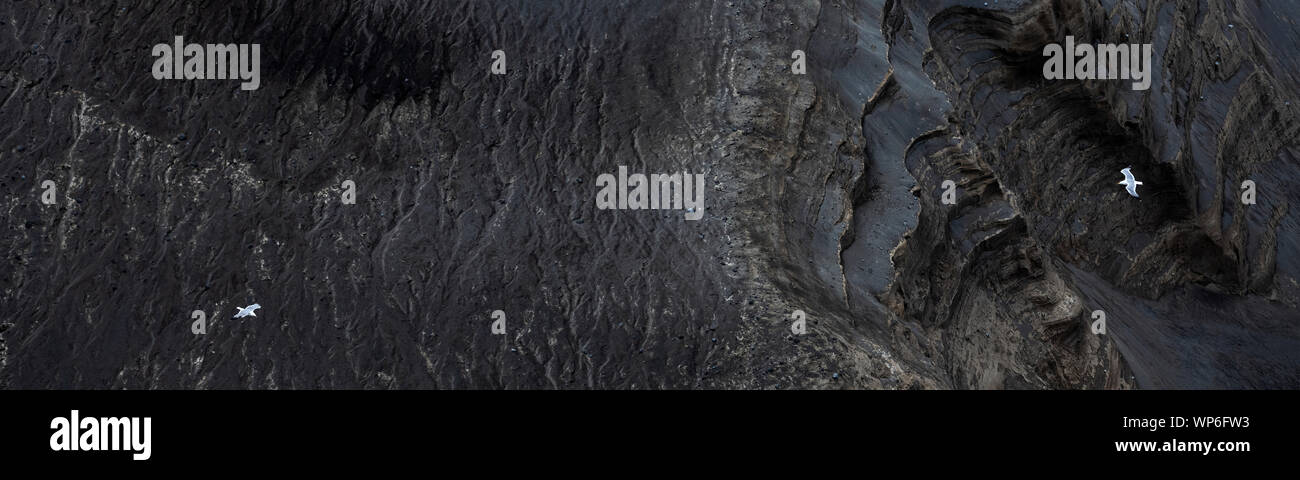White gulls overflying abstract patterns and streams in new black lava land at Capelinhos volcano after the volcanic eruptions of 1957-58. The Capelin

Image details
Contributor:
Henri Martin / Alamy Stock PhotoImage ID:
WP6FW3File size:
58.5 MB (3.5 MB Compressed download)Releases:
Model - no | Property - noDo I need a release?Dimensions:
8256 x 2477 px | 69.9 x 21 cm | 27.5 x 8.3 inches | 300dpiDate taken:
6 June 2019More information:
White gulls overflying abstract patterns and streams in new black lava land at Capelinhos volcano after the volcanic eruptions of 1957-58. The Capelinhos (from Capelo + -inhos diminutive, which literally means "little cape") is a monogenetic volcano located on the western coast of Faial Island in the Azores. It is part of the larger volcanic complex of Capelo, which includes 20 scoria cones and lava fields that are aligned west-northwest to east-southeast from the Cabeço Gordo caldera. Although the name "Capelinhos" is associated with the volcano, it technically refers to the western cape of the parish of Capelo. It can be considered the westernmost point of Europe; there are more westerly islands in the Azores archipelago but they lie on the North American Plate. A volcanic eruption lasted for 13 months, from September 27, 1957 until October 24, 1958, which may have been two overlapping volcanic eruptions. While enlarging the land by 2.4 km², it spawned 300 seismic events, hurled ash 1 km, destroyed 300 houses in the parishes of Capelo and Praia do Norte and caused the evacuation of 2, 000 people (emigration to the US and Canada). On October 25, the volcano entered a period of dormancy. It is a part of an active fissural volcanic complex which creates multiple seismic and volcanic events. The yellow-legged gull (Larus michahellis), sometimes referred to as western yellow-legged gull (to distinguish it from eastern populations of yellow-legged large white-headed gulls), is a large gull of Europe, the Middle East and North Africa, which has only recently achieved wide recognition as a distinct species. It was formerly treated as a subspecies of either the Caspian gull L. cachinnans, or more broadly as a subspecies of the herring gull L. argentatus. The genus name is from Latin Larus which appears to have referred to a gull or other large seabird, and the species name honours the German zoologist Karl Michahelles